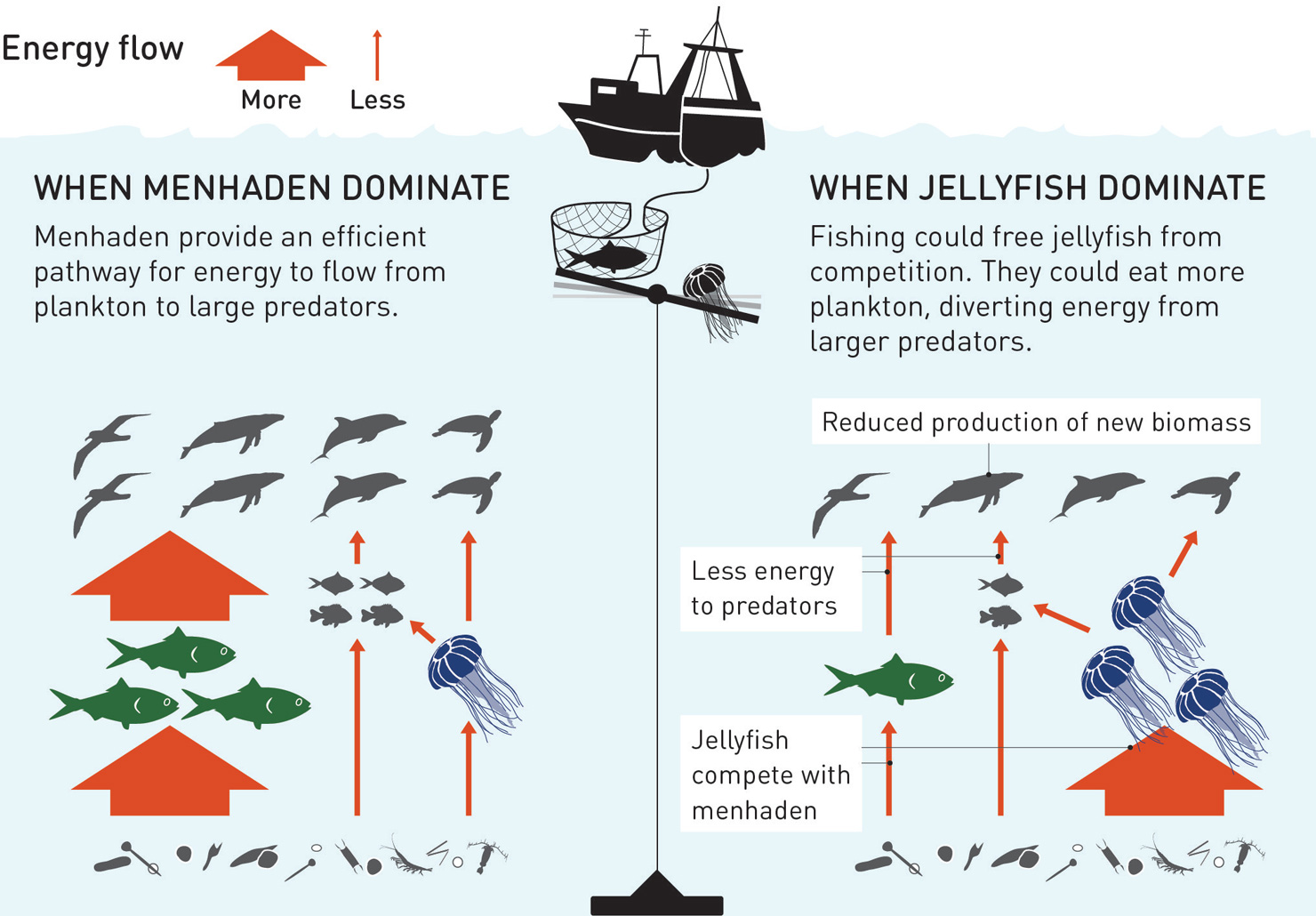Could Fishing and Jellyfish Suppress Gulf Menhaden?
Fishing nearshore in the northern Gulf of Mexico could potentially trigger a self-reinforcing decline in Gulf menhaden, according to a May 2015 study supported by the Lenfest Ocean Program and published in the ICES Journal of Marine Science. The fishery for Gulf menhaden is the largest in the U.S. by weight of fish caught. This small, oily fish is also prey for several other species in the ecosystem may suppress jellyfish populations by competing for plankton.
The authors created a model to study how energy passes from plankton up through menhaden and jellyfish, and ultimately to predators such as seabirds, larger fish, dolphins, and sea turtles. They found that Gulf menhaden is a more effective conduit for energy than jellyfish, which have fewer predators. The results suggest that increased fishing for menhaden could shift the ecosystem toward jellyfish dominance, possibly reducing the abundance of predators.
This graphic depicts that potential ecosystem shift. Study co-author Monty Graham presented it and the study to the menhaden advisory committee of the Gulf States Marine Fisheries Commission in March 2015.

Click graphic to expand

